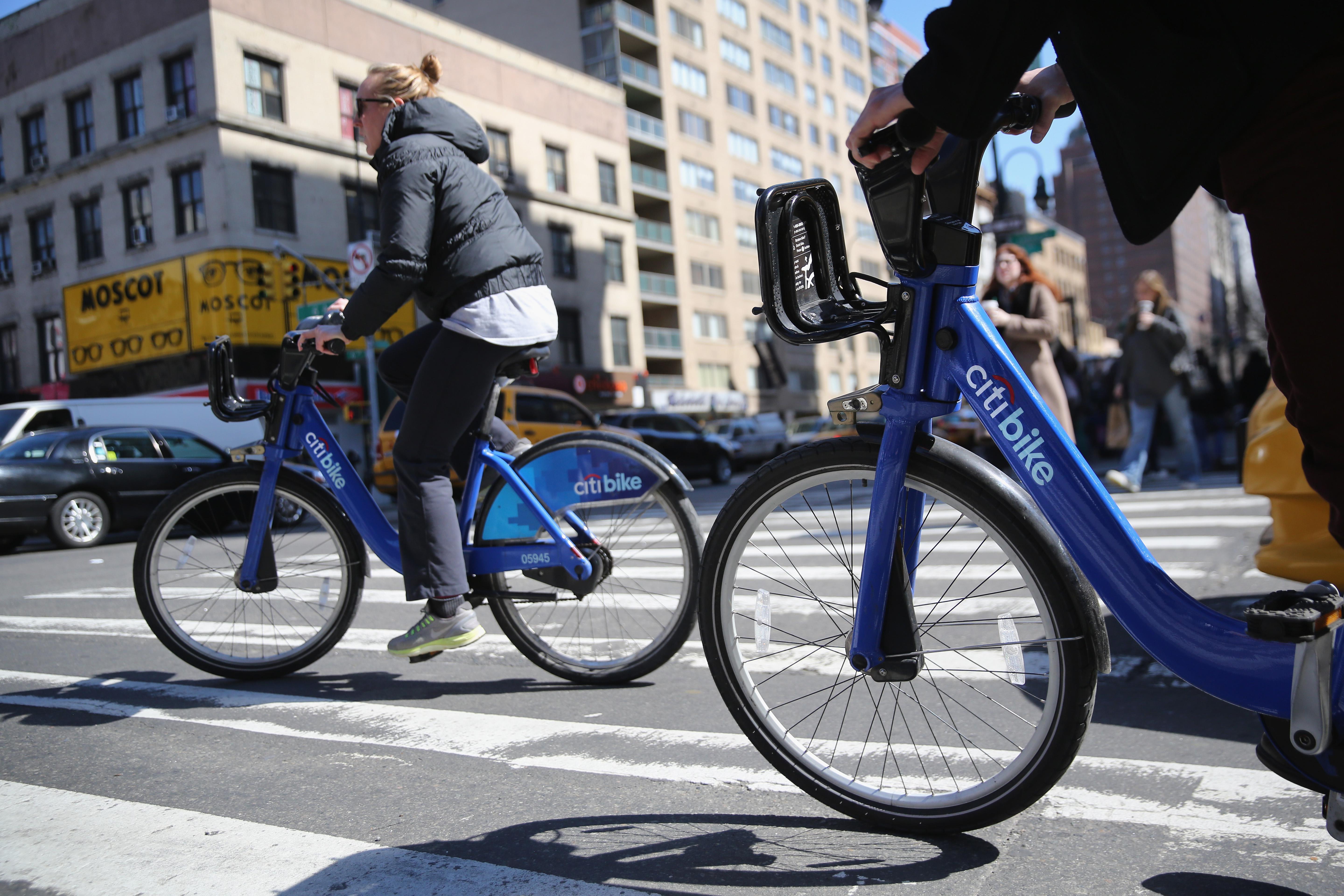One year ago, New York City launched a bike-share program, and pundits predicted a safety nightmare.
“The most important danger in the city is not the yellow cabs, it is the bicyclists,” raved the Wall Street Journal’s Dorothy Rabinowitz in a segment titled “Death by Bicycle.” The Daily Show’s Jon Stewart offered a similarly blunt assessment: “A lot of people are going to die.” The bike-share program did give him an idea for a business, though: “Jon Stewart’s Street Brain Material Removal Service.” A Rutgers professor got more specific. In a New York Post story headlined, “Citi Bike ‘Heading’ for a Fall,” he predicted that cyclist fatalities could triple in the program’s first year, from 20 to 60.
It has now been a full year since the first foolhardy tourists began menacing the city’s streets in those fat blue Citi Bike bikes. Riders have taken more than 8.75 million trips so far, Citi Bike reports, travelling some 14.7 million miles in all. Want to guess how many have died?
None.
“Out of 8.75 million trips, we’ve had about 100 crash reports, of which about 25 warranted a trip to the ER,” Citi Bike spokeswoman Dani Simon told me. “To my knowledge there have been zero fatalities to date. I am keeping up my daily prayers that this trend continues.”
It won’t continue forever, of course: As long as there are humans driving cars on big-city streets, there will be fatal accidents involving cyclists and pedestrians. That said, 8.75 million rides is not a small sample size. It’s clear by now that New York City’s bike-share program is not the death trap that skeptics envisioned.
New York City’s bike-share program is not the only one with a sterling safety record. Washington, D.C.’s Capital Bikeshare hasn’t seen any riders fatally injured either, says Reggie Sanders, director of communications for the District Department of Transportation. “We’ve had some scrapes here and there,” he said. “But so far it’s working out beautifully based on the lack of serious injuries and fatalities.”
Around the world, cities with bike-share programs have seen similar results.
If anything, bike-share programs might make city streets safer. As the Washington Post’s Emily Badger points out, the more bikes and pedestrians are on the road, the lower their fatality rates. Their presence forces motorists to drive more carefully, which is good for everyone.
Citi Bike’s remarkable safety record was overshadowed in the media coverage that accompanied its one-year anniversary, because the program has suffered a variety of setbacks in its first year. Thankfully, a need for brain-material removal services has not been among them. Unless—hey Jon Stewart, did this story just blow your mind?
Previously in Slate:
